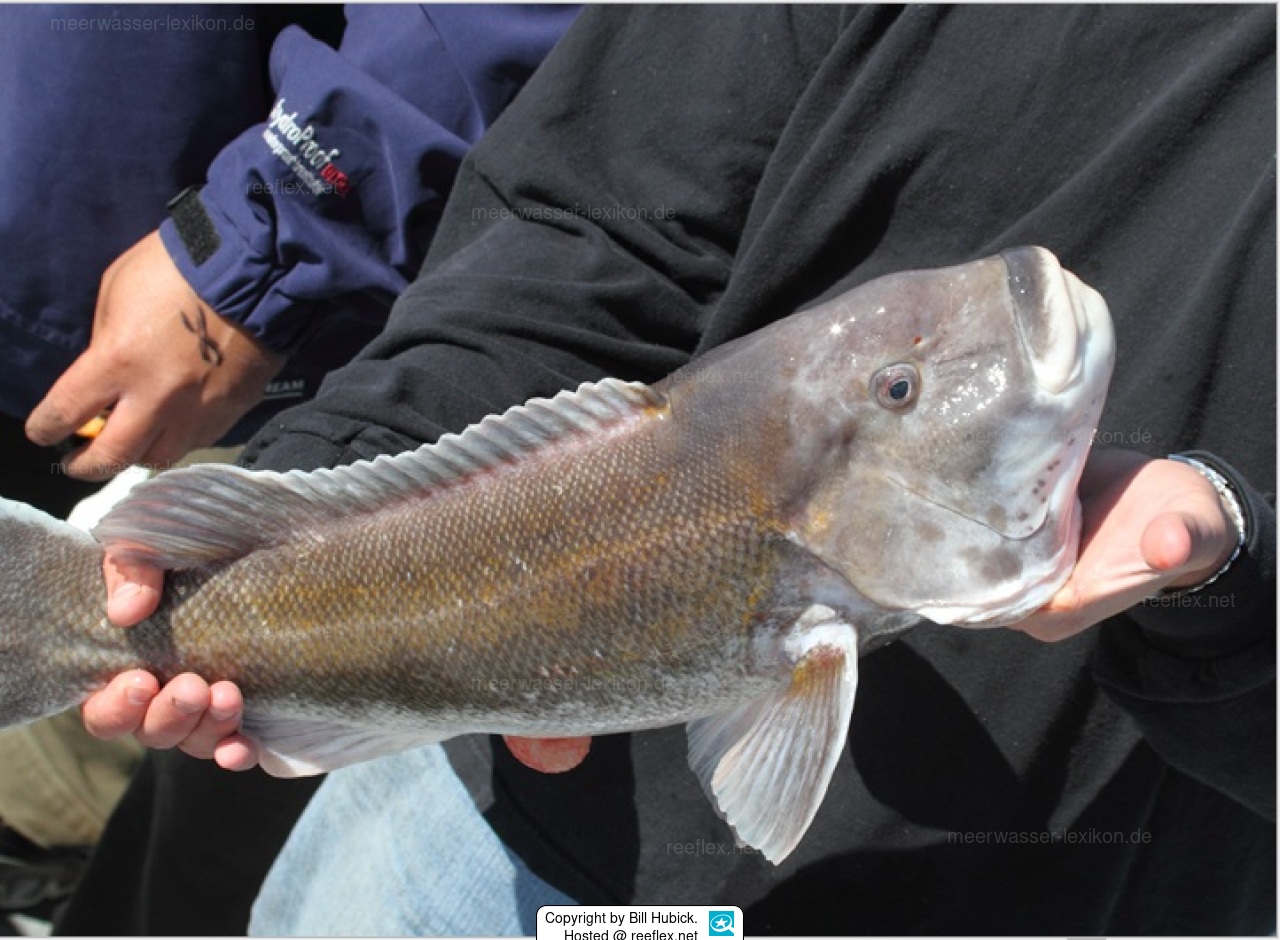Info
Very special thanks for his photos of the coldwater wrasse Tautoga onitis to Bill Hubick.USA.
https://www.billhubick.com/
Tautoga onitis is listed in the IUCN Red List of Threatend Species as "Vulnerable".
This species inhabits shallow water in the summer but migrates to deeper water (25-40 m) when temperatures fall below 10°C.
Adults are usually associated with reefs and manmade structures (Arendt et al. 2001). Adult males are territorial and active during the day to feed and rest in crevices at night. Newly settled individuals and small juveniles occur in estuaries (Dorf and Powell 1997). Juveniles are found in seagrass or algal beds
The Tautog has been subject to an intensive fishery over the last two decades and the population trend is decreasing!
Source: IUCN
Synonym: Labrus onitis (Linnaeus, 1758)
Jumping guard
A jumping guard prevents (nocturnal) fish from jumping out.
Wrasses, blennies, hawkfishs and gobies jump out of an unprotected tank in fright if their night rest is disturbed, unfortunately these jumpers are found dried up in the morning on carpets, glass edges or later behind the tank.
https://www.korallenriff.de/en/article/1925_5_Jump_Protection_Solutions_for_Fish_in_the_Aquarium__5_Net_Covers.html
A small night light also helps, as it provides the fish with a means of orientation in the dark!
https://www.billhubick.com/
Tautoga onitis is listed in the IUCN Red List of Threatend Species as "Vulnerable".
This species inhabits shallow water in the summer but migrates to deeper water (25-40 m) when temperatures fall below 10°C.
Adults are usually associated with reefs and manmade structures (Arendt et al. 2001). Adult males are territorial and active during the day to feed and rest in crevices at night. Newly settled individuals and small juveniles occur in estuaries (Dorf and Powell 1997). Juveniles are found in seagrass or algal beds
The Tautog has been subject to an intensive fishery over the last two decades and the population trend is decreasing!
Source: IUCN
Synonym: Labrus onitis (Linnaeus, 1758)
Jumping guard
A jumping guard prevents (nocturnal) fish from jumping out.
Wrasses, blennies, hawkfishs and gobies jump out of an unprotected tank in fright if their night rest is disturbed, unfortunately these jumpers are found dried up in the morning on carpets, glass edges or later behind the tank.
https://www.korallenriff.de/en/article/1925_5_Jump_Protection_Solutions_for_Fish_in_the_Aquarium__5_Net_Covers.html
A small night light also helps, as it provides the fish with a means of orientation in the dark!







 Dr. Bill Hubick, USA
Dr. Bill Hubick, USA



